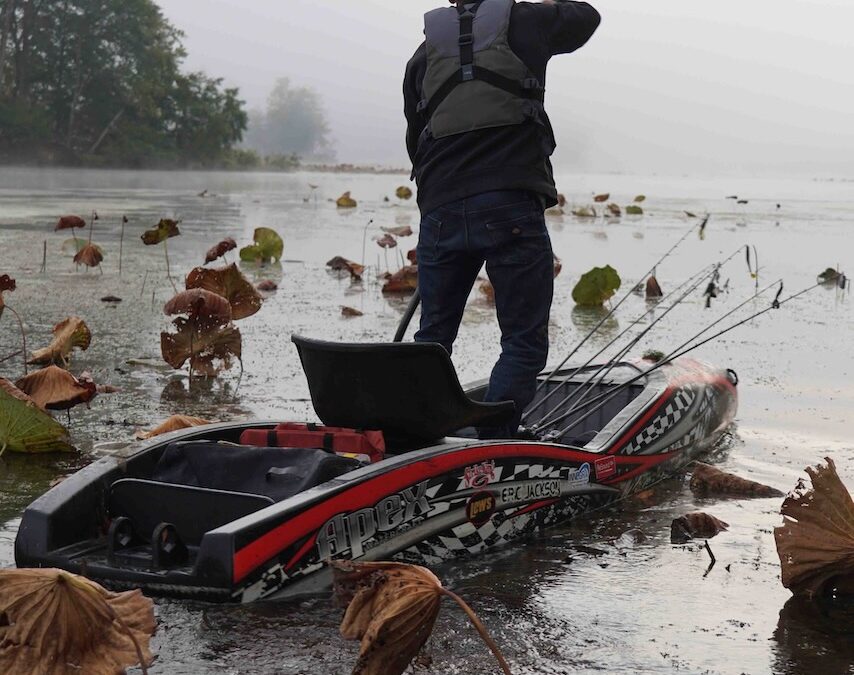Mastering the Forward Stroke for Kayak Fishing

paddling while standing up- paddle board or kayak?
The Forward Stroke is the cornerstone of efficient kayaking for anglers, enabling you to navigate smoothly from one fishing spot to another while maintaining control over your movements.
Drill: Perform 100 Forward Strokes:
- Start with 50 slow strokes, focusing on technique and form.
- Transition to 25 medium-paced strokes, maintaining control and precision.
- Conclude with 25 fast-paced strokes, testing your abilities under increased speed.
Key Elements of the Forward Stroke:
Head:
- Keep your head aligned with your target, typically straight ahead. Initially, without torso rotation, it’s easier to maintain head stability. However, as you incorporate torso rotation, you may need to refocus on keeping your head steady.
Paddle:
- Submerge the paddle in the water near your toes and extract it at your buttocks.
- Strive for a vertical paddle position from both the side and front views. A vertical paddle maximizes efficiency by propelling you forward without unnecessary turning.
- The blade angle, controlled by your top hand, affects stroke efficiency. To maintain a vertical stroke, partially extend the top arm and avoid fully extending it during the stroke.
Boat:
- During the forward stroke, aim to keep your kayak flat, minimizing rocking or tilting.
- Without torso rotation, maintaining a flat boat is easier. However, when incorporating torso rotation, practice separating the movement of your torso from your hips.
Body:
- Keep your body stable, avoiding lunging forward or backward during the strokes.
- Torso rotation is vital; however, many kayakers tend to underestimate their actual rotation ability.
- Practice the winding-up and unwinding motion: Twist your body at the waist, pinning one shoulder back and pushing the other shoulder forward. This coiled position generates power for a stronger stroke.
- The speed at which you propel yourself forward depends on both your arm movement and torso rotation. Utilizing torso rotation increases your top-end speed and allows for longer strokes with a vertical paddle.
- To assess your torso rotation, observe your life jacket as it rotates back and forth against your spray skirt, ideally around 45 degrees in each direction.
- Avoid using your swinging arms as an indicator of torso rotation, as this can be misleading.
Putting it all together:
- Start with paddle position: Slowly and deliberately place the right paddle blade at your toes, while your left hand is slightly in front of and left of your left eye. Pull the blade back gradually until it reaches your buttocks. Repeat with the left blade. Focus solely on paddle position, aiming for a vertical blade from the side view.
- Check torso rotation: Observe your life jacket and ensure it rotates back and forth as you practice the stroke. Use deliberate, slow-motion movements to effectively engage your torso.
- Head alignment: Once you’ve achieved torso rotation, assess whether your head remains stable or moves with your torso. To verify head stability, close one eye and align your nose over the bow of the kayak, observing if it remains steady or swings back and forth.
- Boat stability: Confirm that your boat stays flat throughout the stroke, avoiding excessive rocking. Separating torso rotation from hip movement aids in maintaining boat stability.
- Refine technique: If you’ve successfully maintained head alignment, torso rotation, and boat stability, focus on maintaining a consistent stroke without unnecessary pauses. Minimize breaks between strokes to maintain momentum, aiming for a continuous and fluid motion.
- Progress to advanced drills: Once you’ve become proficient in flat water, you can begin incorporating the forward stroke into kayak fishing situations. Practice stroke timing, adapting to varying water conditions, and keeping your kayak stable while navigating fishing spots and transitioning between locations.
By diligently practicing these techniques and drills, and focusing on independent control over your head, paddle, boat, and body, you’ll develop a strong and efficient forward stroke, enhancing your kayak fishing experiences with improved control and maneuverability. Regularly assess and refine your stroke by utilizing video analysis or seeking feedback from experienced kayakers to ensure you’re executing the stroke correctly.

